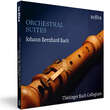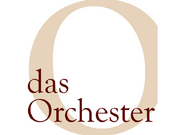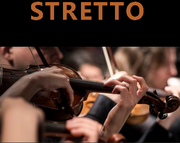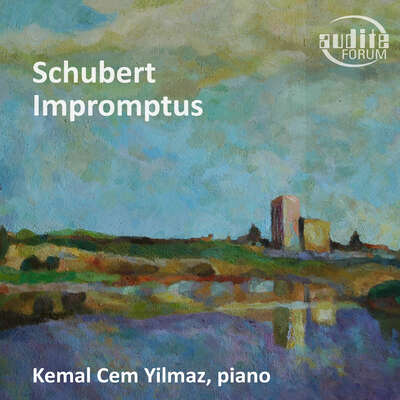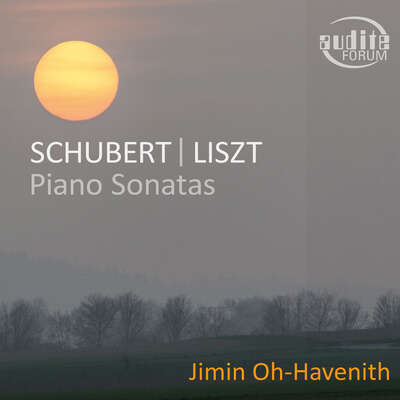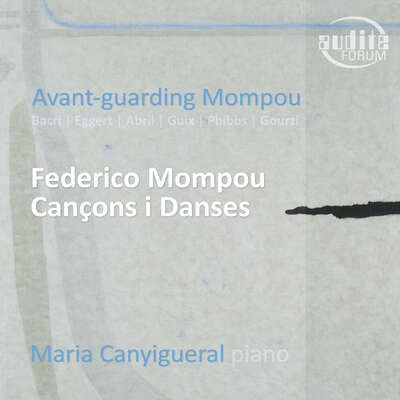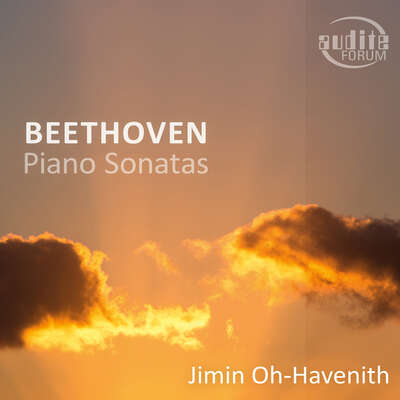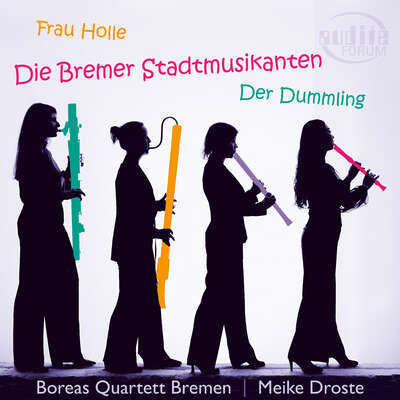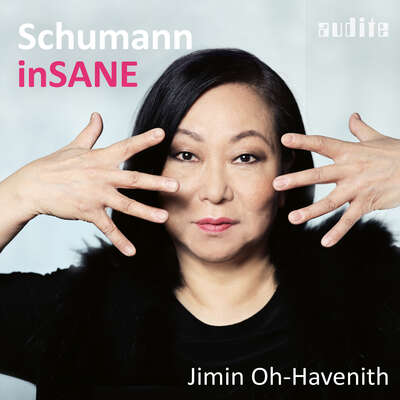
Auto-Rip
Johann Bernhard Bach’s Orchestral Suites are amongst the most varied musical works of the high baroque period in Middle Germany – and they formed part of the core repertoire for Johann Sebastian Bach’s Leipzig Collegium Musicum. Sparkling virtuosic brilliance, as if written by a fiery Italian, whilst displaying the elegant taste of a noble Frenchman – in short, “mixed taste” at its finest. Bon Appétit! more
"Johann Bernhard Bachs Orchestersuiten sind beschwingt und unterhaltsam, gerade wenn sie so spielfreudig musiziert werden wie hier." (NDR Kultur)
Details
| Johann Bernhard Bach: Orchestral Suites | |
| article number: | 97.770 |
|---|---|
| EAN barcode: | 4022143977700 |
| price group: | BCA |
| release date: | 4. October 2019 |
| total time: | 81 min. |
Bonus Material
Informationen
Mixed Taste at its finest - The complete Orchestral Suites of Johann Bernhard Bach
Johann Bernhard Bach's four Orchestral Suites, composed for the court orchestra of the cultured duke of Saxony-Eisenach, are amongst the most varied and sophisticated musical works of the high baroque period in Middle Germany. It was not by chance that Georg Philipp Telemann, a one-time Kapellmeister at Eisenach, commented retrospectively: "I have to praise this orchestra, arranged for the most part according to the French style, for it surpassed the very famous Parisian opera orchestra." From 1703, Bernard Bach was engaged as harpsichordist in this noble orchestra. His Orchestral Suites provide the only surviving "soundtrack" of the illustrious musical life at the Eisenach court during the 1710s and 20s. And what a soundtrack: cosmopolitan, and truly European, with sparkling virtuosic brilliance, as if written by a fiery Italian, whilst displaying the elegant taste of a noble Frenchman. In other words, the "mixed taste", for which the best German composers of the late baroque period were famous, in its finest form. Little wonder then that Bernhard Bach's suites became core repertoire for Johann Sebastian Bach's Leipzig Collegium Musicum, also influencing his compositions.
All this provides sufficient motivation for the Thuringian Bach Collegium to continue their exploration through the Middle German courts for their second CD recording and, with unbridled enthusiasm in their music-making, to bring these jewels of the early Thuringian orchestral music back to life. Bon Appétit!
Reviews
www.amazon.de | 6. Februar 2022 | February 6, 2022 | source: https://www.amaz... Ein Geheimtipp aus der Bach-Familie – sowohl künstlerisch als auch aufnahmetechnisch
Kein Wunder, dass der berühmte Johann Sebastian einige dieser Werke seines Verwandten Johann Bernhard sehr schätzte und selbst mehrmals zurMehr lesen
Kerk & leven | Nr. 42 | 14 oktober 2020 | October 14, 2020 Geen verre neef – Johann Bernard Bach
De kleine bezetting van het Thüringer Bach Collegium [...] verleent deze hofmuziek transparantie en frisheid. De luisteraar krijgt meteen een boeiende inkijk in het muziekleven aan de Duitse hoven, waar ‘kleine meesters’ actief waren die toch mochten rekenen op sympathie van de ‘grote namen’. Deze cd bewijst dat Johann Bernard Bach best uit het vergeetboek mag worden gered.Mehr lesen
Neue Musikzeitung | HörBar 4. August 2020 | Dr. Michael Kube | August 4, 2020 | source: https://hoerbar....
Solistisch besetzt, spielt das Thüringer Bach Collegium die erhaltenen Werke auf höchstem Niveau als ganz große Musik. Mit durchdachter Agilität und Artikulation sowie einem sehr angenehmen direkten Klang ein großartiges Hörvergnügen.Mehr lesen
musica Dei donum | July 2020 | Johan van Veen | July 26, 2020 | source: http://www.music...
[...] a worthwhile addition to the catalogue [...]. The playing is excellent and so is the recording, which has some intimacy without being too direct.Mehr lesen
www.musicweb-international.com | Tuesday July 14th, 2020 | Johan van Veen | July 14, 2020 | source: http://www.music...
Few musical dynasties of the baroque period were so many-branched as the Bachs. For about two centuries they took leading positions in Saxonia andMehr lesen
Johann Bernhard was born in Erfurt as the son of Johann Aegidius, who from 1682 onwards was director of the town music there, and also occupied the post of organist in two churches. One of his pupils was Johann Gottfried Walther. Johann Bernhard was also taught by his father, and may have been a pupil of Johann Pachelbel as well. His organ works show the latter's influence. Those are an imporant part of his rather small extant oeuvre. The four overtures recorded by the Thüringer Bach Collegium are his only instrumental compositions. They may date from the 1720s, and were written for the court orchestra of Duke Wilhelm of Sachsen-Eisenach. In this ensemble Johann Bernhard acted as keyboard player from 1703 until his death.
Three of the overtures have been preserved thanks to Johann Sebastian, who copied the parts for performances of the Collegium Musicum in Leipzig. The fourth overture (the one in E minor) has come down to us in a copy by a certain S. Hering, who belonged to the environment of Carl Philipp Emanuel Bach. Johann Sebastian and Johann Bernhard were apparently in pretty close contact, as the Leipzig Thomaskantor was the godfather of Johann Bernhard's son Johann Ernst, who was later to become a pupil at the St Thomas School.
The overture was basically a French-inspired genre, modelled after the suites from operas by Jean-Baptiste Lully in Paris. The splendour of the French monarchy exerted a strong attraction on rulers across Germany. Some required their composers to write music in the French style; they were called 'Lullistes'. Georg Philipp Telemann also became acquainted with the French style, and when he worked at the court in Eisenach from 1708 to 1712, he composed many orchestral overtures. There can be little doubt that he influenced his colleague Johann Bernhard Bach. However, Telemann's overtures were not purely French. As the German conductor Reinhard Goebel once observed, French composers would not have recognized the overtures of the likes of Telemann and Bach as French. German composers mixed the French style with Italian influences, for instance by giving particular instruments an obbligato role in an entire suite or in some of its movements. Examples are the second overture by Johann Sebastian Bach (BWV 1067, with a solo part for the transverse flute) and Telemann's overtures with solo parts for recorder and for viola da gamba. Such an overture also appears in Johann Bernhard's oeuvre: the Overture No. 1 has an obbligato part for the violin.
All four suites open with an ouverture in ABA form. It is followed by a sequence of dances: in addition to the traditional dance forms, such as allemande, courante, sarabande and gigue, Johann Bernhard included modern dances which were part of the galant idiom, such as rondeau, passepied and polonaise. Many of Telemann's overturs include character pieces. In Johann Bernhard's suites we also find a few. The third movement of the Overture No. 3 is called Les plaisirs, the penultimate movement from the Overture No. 4 bears the title La joye. The latter suite includes three movements called caprice as well as a marche.
In this recording there is something notable in the Suite No. 2. It ends with a movement called La tempete. This is not from Johann Bernhard's pen, but was added by Johann Sebastian for a performance in Leipzig. Originally it was the overture to the opera Il Zelo di Leonato by Agostino Steffani, first performed in Hanover in 1691. Whereas the four overtures by Johann Bernhard have been recorded before, the present recording is the first where this piece is included.
That brings us to the performance. Apparently the material copied by Johann Sebastian was the starting point for these performances. From that perspective the line-up raises questions. Michael Maul, in his liner-notes, mentions that Johann Sebastian "had duplicates made of the two violin parts for the D major and G minor suites - with his Collegium Musicum, he clearly performed these works using a relatively large ensemble." It is a little inconsistent that the performers decided to record these overtures with one instrument per part. Maul does not inform us, what is known about the size of the court orchestra in Eisenach. The overtures are scored for strings and basso continuo, but here woodwinds are added in some movements, playing colla parte with the strings. This may well be justified, considering the French orientation of these works, as in France oboes and bassoon often participated in such music without being specified. Here we hear not only oboes and bassoon, but also recorder and transverse flute, which is rather questionable. The participation of the winds seems also arbitrary.
Another issue is the performance of the opening ouvertures. Performers take different decisions with regard to the repeats. Some only repeat the first section once, resulting in an ABA texture, whereas others repeat it twice and also repeat the B section: ABABA. It seems rather odd that the performers here chose the former option in the first two suites, and the latter in the remaining two. I can't figure out any reason for this difference.
One should not conclude from these critical remarks that this recording is disappointing. Far from it. In some cases I found the tempo a bit too slow, but overall I have quite enjoyed these performances. When I first heard these suites, I was hooked, and they belong to my favourite orchestral pieces of the German Baroque. I heard them first in a recording by the Freiburger Barockorchester (Virgin Classics), which may still be available and is well worth having. To my surprise, the present recording includes a pair of menuets in the Overture No. 3 which are missing from the Virgin Classics recording. I have not found any explanation for that. Anyway, this and the addition of La tempete mentioned above makes this a worthwhile addition to the catalogue anyway. The playing is excellent and so is the recording, which has some intimacy without being too direct.
Fanfare | June 2020 | Bertil van Boer | June 1, 2020
One of the main issues lurking in the background of any research on the music of Johann Sebastian Bach is that he was part of a larger family, all ofMehr lesen
The interaction between Johann Bernhard and Johann Sebastian was close; both acted as godfathers to sons, and it is clear that they exchanged music for performance in their various towns. Unfortunately, much of Johann Bernhard’s works still remain to be recovered; what exists today consists of the four orchestral suites recorded here and a small number of organ works. His obituary, however, notes in 1749 that he was noted for his numerous “overtures” though with the odd comment that they reflected Telemann’s style. While it may well be that the talented Telemann’s short sojourn in Eisenach may have resulted in mutual musical influences, such a statement is to be taken with a great deal of salt. The implication that the orchestral suites were imitations may be invidious, but Johann Sebastian thought enough of them to perform at least three regularly with his Leipzig collegium, and the fourth exists in a manuscript set of parts that was probably derived from Emanuel Bach’s musicalia in Berlin.
All four of the suites conform to the conventions of the time, being a series of stylized dances following a French overture. The scoring is the usual strings, with the addition of discrete woodwind parts; since only one of them is in the usual trumpet key of D Major, such instrumentation is not exceptional. The D-Major Suite (No. 4) may originally have had these, but the only source from Leipzig omits them. Each opens with a stylized French overture. That in the Fourth Suite is regal and gripping in the powerful dotted rhythms of the opening, making the following fast section a lively compound meter gigue. This contrasts with the pensive beginning to the Third Suite, with its soft transverse flutes. Doubled by the oboes, the textures create a gently flowing movement that devolves into a sort of concerto grosso with solo woodwinds and lines that flow over themselves, much as Johann Sebastian’s concertos are wont to do. The individual movements do not always follow the French-inspired conventions that dominate the latter’s suites. For example, the sixth movement of the E-Minor Suite is a lively Rigadon with swirling lines, while the three caprices of the D-Major Suite are each short interludes into the dance structure; the first is regal and stately, the second moves along at an easy running pace, while the third that concludes the suite is characterized by solemn dotted rhythms, thus brining the work full circle. In the first suite, the fifth movement is entitled “Fantasie,” with an insistent sense of melancholy, while the air of the Second Suite is light and airy. This particular suite ends with a movement entitled “The Tempest,” which is the overture taken from Agostino Steffani’s Il Zela di Leonato, which was produced with success in Hannover in 1691, and which Bach clearly thought would be a good conclusion to his shortest suite. The final tempest portion swirls about in musical eddies and changing musical currents.
The Thüringer Bach Collegium produces a fully appropriate ensemble for this music with clear instrumental definition, not to mention a good sense of texture and tempos. The latter are lively but not rushed, and one finds that the instruments are all clear and in tune. The works demonstrate more intricacies than his nephew’s similar suites, though they are not quite as powerful in terms of instrumentation or memorable tunes. The dance background is emphasized but not overwhelming, and their excellent interpretation shows that Johann Bernhard was an innovative and intelligent composer, fully versed in the prevalent styles of his time, though he also includes a sense of musical whimsy that makes these works more akin to Telemann than his nephew. This is one disc that is well worth obtaining, both for the fine performance and for the elegant music.
www.artalinna.com | 9 APRIL 2020 | Jean-Charles Hoffelé | April 9, 2020 | source: http://www.artal... France d‘Outre-Rhine
[...] les Thuringeois les joue plus Telemann, avivant les rythmes, les dansant, savourant des alliages instrumentaux plus âpres, jouant plus sur la corde, ce qui convient aux danses vives [...]Mehr lesen
cdhotlist.btol.com | February 3, 2020 | Rick Anderson | February 3, 2020 | source: https://cdhotlis...
Both of these releases are both historically significant and musically delightful.Mehr lesen
ouverture Das Klassik-Blog | SONNTAG, 2. FEBRUAR 2020 | Anke Krey | February 2, 2020 | source: http://ich-habe-...
Es sind anspruchsvolle Werke, voll Eleganz und voll Überraschungen. Das Thüringer Bach Collegium bringt diese musikalischen Brillanten mit ganz enormer Musizierlust so recht zum Funkeln. Entstanden sind diese Aufnahmen übrigens in der Eisenacher Georgenkirche. Eine hinreißend schöne Einspielung [...]Mehr lesen
American Record Guide | February 2020 | Peter Loewen | February 1, 2020
These are the four orchestral suites of Johann Bernhard Bach (1676-1749), and we have his second cousin JS Bach to thank for having preserved andMehr lesen
Diapason | N° 687 - Février 2020 | Jean-Christophe Pucek | February 1, 2020
De ce Johann Bernhard Bach, les histoires de la musique ont surtout retenu la nomination à la Georgenkirche d'Eisenach en remplacement de son cousinMehr lesen
Pour ces partitions où élégance et fraîcheur savent fa ire place à quelques airs tendres ou graves, seule la lecture claire et équilibrée du Bach Concentus (Accent, 2008) s'en tient à l'effectif écrit par le compositeur. Les autres versions de la discographie, celle de L’Achéron en tête, hélas lourdement handicapée par une captation confuse (Ricercar, Cinq Diapason, cf. n° 652), y ajoutent des vents. C'est également l'option retenue par Gernot Süssmuth qui dirige du violon un Thüringer Bach Collegium concentré et déploie une incontestable ardeur pour défendre ces pages. Galbées, nerveuses et colorées, les Ouvertures en mi mineur et en ré majeur sont les plus réussies. Les deux autres sont plus inégales, alternant instants de grâce et moments de flottement, voire prosaïques; c'est particulièrement regrettable pour la splendide Ouverture en sol mineur qui offre à l'archet soliste tant d'occasions de fa ire valoir ses qualités expressives. Cette réalisation méritoire, dont on goûtera la présence et le grain, aurait gagné à plus de souplesse. Elle ne remet pas en cause la suprématie du Bach Concentus et d'un Freiburger Barockorchester juvénile et gourmand (Emi, 1993).
Musica | N . 313 - FEBBRAIO 2020 | Marco Testa | February 1, 2020
Un ensemble, quello dei Thüringer, che della «prassi storicamente informata» ha fatto la propria ragion d’essere, unitamente a una abilità esecutiva capace di far rivivere la partitura con pienezza, nel rispetto degli stili e quindi dell’eterogeneità dei movimenti che compongono questi lavori.Mehr lesen
Das Orchester | 02/2020 | Friedemann Kluge | February 1, 2020 | source: https://dasorche...
Das Thüringer Bach Collegium zeichnet sich in dieser Aufnahme durch eine enorme Spielfreude aus, interpretiert beseelt und mit viel Esprit. Und vor allem so kompetent, dass man sich die damals am Hofe zu der teils französisch, teils italienisch inspirierten Musik tanzenden Paare äußerst lebendig vorstellen kann.Mehr lesen
hifi & records | 1/2020 | Ludwig Flich | January 1, 2020
Auch hier sind die musikantischen Qualitäten der Thüringer ohrenfällig und der Klang – historisch passend von Bernhard Hanke in der schönen Georgenkirche in Eisenach eingefangen – hervorragend.Mehr lesen
Scherzo | 01.12.2019 | Mariano Acero Ruilópez | December 1, 2019
Técnica y estilísticamente impecable, es una interpretación noble, con fuerza, garra y ritmo [...]Mehr lesen
Early Music Review | 01.12.2019 | David Stancliffe | December 1, 2019 | source: https://earlymus...
These four suites by Johann Sebastian’s second cousin and near contemporary display his skill and invention. Cast in the form of suites with aMehr lesen
From 1703, Johann Bernhard held the post of organist in Eisenach till his death in 1749, overlapping between 1708 and 1712 with Telemann. He was also harpsichordist to the admired court orchestra of Duke Johann Wilhelm of Sachsen-Eisenach.
J. S. Bach had copied out at least three of these suites for the Collegium in Leipzig, and it is because of this set of parts that Johann Bernhard’s music survives. The two Bachs were cross godparents to each other’s children, and Johann Bernhard’s ease with the French as well as the Italian style gives us an interesting glimpse of the cosmopolitan nature of this small Saxon court.
The competent players of the Thüringer Bach Collegium use single strings plus the director, Gernot Süßmuth’s solo violin and muster two oboes, a taille and fagotto, and one is heard playing recorder and traverso.
The performances are snappy, and sometimes a little rustic – some slapping of the instruments from time to time; but the major and in the end irritating fault is that the kontrabass is either miked far too closely or else just plays insensitively. With single strings, I would have been quite content with a violone or bass violin at 8’ pitch, but a substantial double bass thumping away – frequently joined by the harpsichordist’s lute stop – is an error of judgment and doesn’t blend with the rest of the band as it should.
The music was recorded in the Georgenkirche in Eisenach and from the photo in the booklet the players were standing just east of the font in which JSB was baptised. The essay (in German and then in English) on where this music fits into the high Baroque in Saxony is admirably informative. But there is no information on instruments or temperament, which would have been a plus. The ensemble has already recorded concerti by Prinz Johann Ernst von Sachsen-Weimar on the same label, and is clearly performing a notable service in making this kind of court music available to a modern audience.
The music is novel, fills a gap in our understanding of court life in the early 18th century and is tuneful as well as original. If you can bear the kontrabass, you will enjoy this music.
www.musicweb-international.com | Dec 2019 | Brian Wilson | December 1, 2019 | source: http://www.music...
[…] By one of those coincidences which mirror the banana-bunch effect of London buses, another recording of JB Bach’s Suites has recentlyMehr lesen
Gramophone | December 2019 | Lindsay Kemp | December 1, 2019
Rinaldo Alessandrini’s new recording of Bach’s Orchestral Suites may well be the danciest ever. Thirteen years after his joyful account of theMehr lesen
Elsewhere Alessandrini shows that he has no auto-pilot for these pieces, only lively ideas in plenty. Normally racing dances such as the Réjouissance and Badinerie are calmly measured, as are the Ouvertures, though never in the same way twice. The First Suite’s Courante flaunts a rather deliberate inégal while the Forlane stamps like a snorting horse. The Second Suite’s Rondeaux is surprisingly brisk, while its Sarabande refuses to allow itself to fixate on its treble-bass canon, concentrating instead on light and natural phrasing. The Third Suite’s famous Air is presented not as a melody with subservient accompaniment but as an intricate and lovingly drawn contrapuntal web.
Any performance with as many ideas as this will invite dislikes (I have a bit of a problem with the intermittently clodhopping bass in the First Suite’s Passepied), but overall I’m sure the lasting impression for many will be of a joyous and refreshing encounter with familiar music, served with a meticulous and constantly imaginative attention to details of phrasing and articulation, a crispness of ensemble and a bright and bracing transparency of texture, that may not have been matched since Musica Antiqua Köln’s brilliant but less yieldingly human Archiv recordings in the 1980s.
Alessandrini augments the four Bach Suites on this two-disc set with a suite each by two of his slightly older cousins, Johann Bernhard and Johann Ludwig, both of them more Telemann-like and closer in manner to the form’s French origins than their more famous counterparts. They are welcome in themselves, but also have the effect of emphasising just how contrapuntally rich Sebastian’s suites are.
Ludwig’s Suite is the only one of his to survive, as it happens, but we are luckier with Bernhard, for there are four of his left to us, mainly thanks to the interest taken in them by Sebastian, who had three of them copied out to perform alongside his own at the Leipzig Collegium Musicum in the 1730s. All four appear in their own right on a disc from the Thüringer Bach Collegium, a newish group formed to explore just this kind of Bach hinterland and who, led by the violinist Gernot Süssmuth, engage fully with the music’s bright mix of movementtypes, including some – such as its Caprice, Fantaisie and a couple of French-style character-pieces – not used by Sebastian. Playing one-to-a-part, they find all the nimble energy needed for the likes of the Rigadons and Passepieds, as well as the soulful melody installed in the sweetly rapt Sarabandes and Airs, including one in the G major Suite that is in real ‘Air on the G string’ territory. The sound is intimate, transparent and not always ideally blended, but it is altogether more present and engaging than in the recording made a little while ago by L’Achéron (Ricercar, 2/17), whose larger forces sound squidgy and distant by comparison. The Thuringians also give us a bonus in ‘La Tempête’, the little encore – actually a short overture composed in 1691 by Steffani – which Sebastian added to the G major Suite for his Leipzig listeners’ entertainment.
www.recordsinternational.com | November 2019 | November 1, 2019 | source: https://www.reco...
Core repertoire for J. S. Bach's Leipzig Collegium Musicum, his second cousin’s suites are cosmopolitan, and truly European, with sparklingMehr lesen
NDR Kultur | Sonntag, 20. Oktober 2019, 19:15 bis 20:00 Uhr | Friederike Westerhaus | October 20, 2019 | source: https://www.ndr....
BROADCAST: CD-Neuheiten
Neues vom CD-Markt
[…] Das Thüringer Bach Collegium rückt einen Cousin von Johann Sebastian ins Rampenlicht: Johann Bernhard Bach. Dessen Orchestersuiten sindMehr lesen
Stretto – Magazine voor kunst, geschiedenis en muziek | Oktober 17, 2019 | Michel Dutrieue | October 17, 2019 | source: http://www.stret...
Van Johann Bernhard Bachs orkestmuziek zijn slechts vier suites overgeleverd en wel in het handschrift van Johann Sebastian Bach. Deze meerdeligeMehr lesen
Johann Bernhard Bach der Ältere (1676-1749) was een achterneef van Johann Sebastian Bach. Johann Bernhards grootvader, Johann (1604-1673), was nl. de oudste broer van Johann Sebastians grootvader, Christoph (1613-1661). Johann Ambrosius, één van zijn drie zonen, (de andere twee waren Georg Christoph en Ambrosius’ tweelingbroer, Johann Christoph) werd nl. de vader van Johann Sebastian. Johann Sebastians eerste vrouw Maria Barbara (1684-1720) was in diezelfde graad familie van haar echtgenoot en van Johann Bernhard. Háár grootvader Heinrich (1615-1692), de derde en jongste broer, werd nl. de stamvader van de “Arnstadt-Linie”, de voortzetting van de “Erfurter Linie”.
Johann Bernhard Bach werd in 1676, in Erfurt geboren in het huis “Zu den drei Rosen” op Junkersand, en gedoopt in de Erfurter Kaufmannskirche. Net als zijn broer Johann Christoph Friedrich, geboren in 1685, werd hij als kind muzikaal opgeleid door zijn vader Johann Egidius Bach, violist en altist in de plaatselijke “Stadtmusikanten-Kompagnie”. Na een bezoek aan de Schola Mercatorum, werd hij in het najaar van 1690 ingeschreven aan het Ratsgymnasium in Erfurt. In 1695 werd hij organist aan de Kaufmannskirche in Erfurt (foto) en in 1699 verhuisde hij naar de St.-Catharinakerk in Magdeburg.
In 1703 benoemde hertog Johann Wilhelm van Saksen-Eisenach hem tot klavecinist in het hoforkest in Eisenach, en werd hij ook aangenomen als opvolger van zijn oom Johann Christoph Bach, als organist van de Georgenkirche. Van 1708 tot 1712 werkte Johann Bernhard Bach in Eisenach samen met Telemann die toen Hofkapelmeester aan het hof van Hertog Johan Willem van Saksen-Eisenach (foto) was. In 1712 vertrok Telemann naar Frankfurt.
In 1716 trouwde Johann Bernhard met Johanna Sophia Siefer. Het echtpaar kreeg drie kinderen. In 1741 werd het hertogelijke orkest ontbonden, zodat Johann Bernhard Bach daarna tot aan zijn overlijden uitsluitend als cantor werkte. Met zijn beroemde neef Johann Sebastian was Johann Bernhard zijn leven lang bevriend. In 1715 werd hij trouwens peetvader van Johann Sebastians zoon Johann Gottfried Bernhard, terwijl in 1722 Johann Sebastian de peetvader werd van zijn oudste zoon Johann Ernst. Hij was na het overlijden van Johann Bernhard, zijn opvolger als organist in de Georgenkirche in Eisenach (foto). Johann Pachelbel (foto) had invloed op de orgelcomposities van Johann Bernhard Bach. Pachelbel was nl. van 1678 tot 1690, organist in Erfurt. Het is ook bekend dat Johann Sebastian Bach met zijn Collegium Musicum, verschillende composities van zijn achterneef uitvoerde in Leipzig.
Elke Suite bestaat uit een ouverture, gevolgd door vijf tot zeven dansen (Passepied, Gavotte, Sarabande, Rigaudon, Menuet), een Air, een Rondeau, een Fantaisie, of genrestukken als La Joye, Caprice, Les plaisirs of La Tempête. Het Thüringer Bach Collegium geeft met amper elf musici (enkel strijkers, houtblazers en continuo), o.l.v. Gernot Süssmuth, (concertmeester van de Staatskapelle Weimar, Professor aan de Hochschule für Musik „Franz Liszt“ in Weimar en ook violist van het Waldstein Quartett), met de indringende klank van hun historische instrumenten, op een indrukwekkend authentieke manier, sonoor gestalte aan het roemrijk tijdperk van het land van de Bachs. Niet te missen. Schitterend!
www.pizzicato.lu | 07/10/2019 | Remy Franck | October 7, 2019 | source: https://www.pizz... Musik vom Cousin
Randvoll ist diese neue CD mit der Gesamteinspielung von Johann Bernhard Bachs Orchestersuiten durch das Thüringer Bach Collegium. Johann BernhardMehr lesen
Das Thüringer Bach Collegium bestätigt mit seiner zweiten CD-Produktion sein hohes Niveau. Es zeigt in dieser exemplarischen Einspielung, wie kraft- und ausdrucksvoll deutsche Barockmusik sein kann, ohne je schwerfällig zu werden. Andere Ensembles haben versucht Schwere mit fetzigem Musizieren zu umgehen, aber das ist auch nicht der richtige Weg. Die Thüringer gehen da viel zielsicherer vor, mit klaren Phrasierungen, die die Musik kraftvoll wie elegant dahinströmen lassen. Sehr schön sind hier ein homogener Klang, viel Transparenz und ein feinfühliges Zusammenwirken, ausgehend von der Intensität eines hervorragend gestalteten inneren Dialoges.
This new CD is packed with the complete recording of Johann Bernhard Bach’s Orchestral Suites by the Thüringer Bach Collegium. Johann Bernhard Bach (1676-1749), a second-degree cousin of Johann Sebastian Bach, composed these suites for the court orchestra of the Duke of Saxony-Eisenach. The composer, known as cosmopolitan wrote stylistically very diverse pieces and thus made an outstanding contribution to the music of the High Baroque period.
With its second CD production, the Thüringer Bach Collegium confirms its high standard. In this exemplary recording it shows how powerful and expressive German baroque music can be without ever becoming cumbersome. Other ensembles have tried to avoid heaviness with high speed, but this is not the right way either. The Thuringians proceed much more purposefully, with clear phrasings that let the music flow powerfully and elegantly. The well balanced sound, a lot of transparency and a sensitive inner dialogue are very attractive.
Note 1 - Neuheitenheft | Oktober 2019 | October 1, 2019 Der Vetter aus Eisenach
Als Georg Philipp Telemann 1712 von Eisenach nach Frankfurt wechselte, wurde Johann Bernhard Bach (1676-1749), ein Cousin zweiten Grades von JohannMehr lesen
